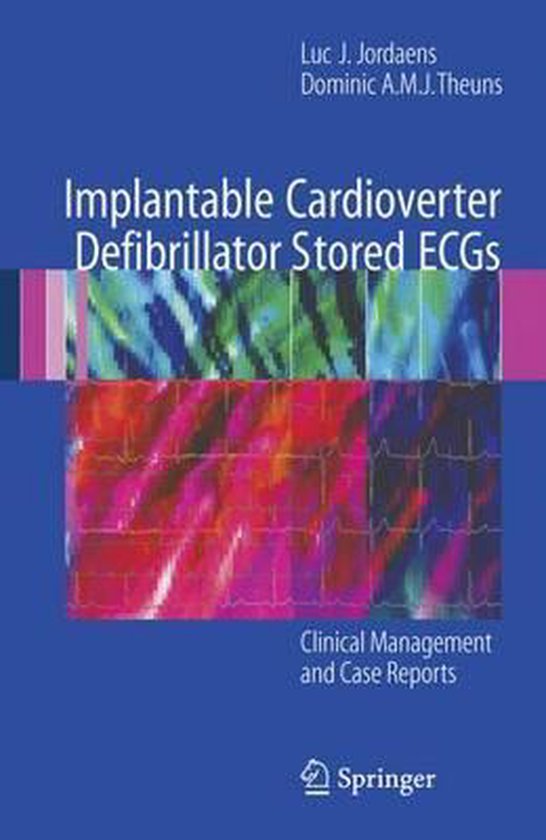Implantable cardioverter defibrillator stored ecgs

Uiterlijk 3 december in huis
Implantable Cardioverter Defibrillator Stored ECGs instructs the reader on the appropriate and optimal reading of device diagnostics in clinical practice using a format developed around low text volume, charts, and practical (hands-on) protocols that can be used directly during ICD follow-up.
Implantable cardioverter-defibrillator (ICD) therapy is a key method for treating cardiovascular patients, used for both primary and secondary prevention of sudden cardiac death. While a common intervention, the difficulties of understanding events during follow-up limit follow-up to centers with knowledge of the techniques involved, whereas this should be an essential skill in all cardiological units.
Implantable Cardioverter Defibrillator Stored ECGs instructs the reader on the appropriate and optimal reading of device diagnostics. The authors are internationally renowned experts in electrophysiology and have considerable experience in training staff in all aspects of best practice. They make extensive use of case reports, illustrations, charts, and practical protocols for ICD follow-up. The reader will gain extensive clinical knowledge of the practice of ICD therapy by reviewing these case reports, which emphasize the skills necessary to increase specialist knowledge of defibrillator therapy practice.
Electrophysiologists, cardiology technicians, residents, fellows and cardiology clinicians will gain benefit from using this book as a bedside tool to guide them to perform and interpret electrograms more comprehensively.
Implantable Cardioverter Defibrillator Stored ECGs instructs the reader on the appropriate and optimal reading of device diagnostics in clinical practice using a format developed around low text volume, charts, and practical (hands-on) protocols that can be used directly during ICD follow-up. This concise didactic reference book provides clinical information via the use of images to illustrate specific diagnostic features in defibrillator therapy. The first part consists of chapters on defibrillator diagnostics, followed by case-based presentations with images, actual patient histories and a summary paragraph. All common and some rarer situations are covered.
- 1 Bekijk alle specificaties
Taal: en
Bindwijze: Paperback
Oorspronkelijke releasedatum: 06 november 2010
Aantal pagina's: 208
Illustraties: Nee
Hoofdauteur: Luc J. Jordaens
Tweede Auteur: Dominic A.M.J. Theuns
Co Auteur: Dominic A. M. J. Theuns
Hoofduitgeverij: Springer
Editie: Softcover reprint of hardcover 1st ed. 2007
Extra groot lettertype: Nee
Product breedte: 155 mm
Product lengte: 235 mm
Studieboek: Ja
Verpakking breedte: 156 mm
Verpakking hoogte: 11 mm
Verpakking lengte: 234 mm
Verpakkingsgewicht: 299 g
EAN: 9781849966405